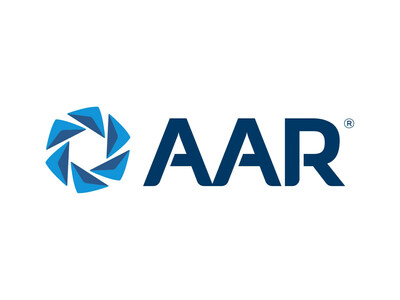Opportunity Assessment of the Missile Tracking Systems Market, 2023 to 2033: AI and ML Integration for Directed Energy Weapons (DEWs)
DUBLIN, Dec. 22, 2023 /PRNewswire/ — The “Missile Tracking Systems Market – A Global and Regional Analysis: Focus on Application, Platform, and Region – Analysis and Forecast, 2023-2033” report has been added to ResearchAndMarkets.com’s offering.
The present missile tracking systems situation demonstrates a remarkable progression over the decades, driven by technological breakthroughs and the ever-increasing complexity of modern combat. These systems have evolved from simple radar-based tracking to sophisticated multi-sensor networks that incorporate radar, infrared, GPS systems, and electro-optical technologies to offer complete situational awareness.
In recent years, the integration of artificial intelligence and machine learning has played a critical role in improving missile tracking accuracy and speed, allowing real-time threat identification and interception. Furthermore, the growth of hypersonic missiles and other sophisticated threats has accelerated the development of even more robust missile tracking systems, needing continuous innovation in both hardware and software components.
Industrial Impact
Missile tracking systems have evolved as a key element of modern defense tactics, changing governments’ perceptions of preparation for potential threats. These missile tracking systems are critical to a country’s security since they provide real-time information on approaching missiles, allowing for quick and informed decision-making. The significance of missile tracking systems resides not only in their ability to identify and track these fast missiles but also in their ability to anticipate their trajectories and probable impact sites. This degree of accuracy enables the efficient deployment of defense measures such as interceptor-guided missiles, which may intercept and eliminate incoming threats, reducing potential damage and casualties.
Furthermore, the introduction of sophisticated missile tracking systems has added an additional layer to deterrent measures. Knowing that a government has possession of advanced missile tracking and interception technologies can be a significant discouragement to potential enemies. This technology not only raises the risks and costs of missile assaults but also creates a sense of uneasiness among opponents. As a result, countries with strong missile tracking capabilities can strengthen their national security without resorting to military action. The very existence of these systems can impact prospective enemies’ calculations, encouraging stability and lowering the chance of violence. As a result, missile tracking systems have become an important weapon in altering the geopolitical environment, providing nations with the ability to defend themselves more effectively while also building global peace.
Market Segmentation:
Segmentation 1: by Application
- Target Acquisition
- Air Defense
- Space Domain Awareness
- Early Warning Capabilities
Air Defense Segment to Dominate the Global Missile Tracking Systems Market (by Application)
The missile tracking systems market was led by air defense, with a 40% share in 2022, and is expected to continue its dominance during the forecast period 2023-2033. Increasing demand by the defense industry for countering hostile missiles is driving the growth of the missile tracking systems industry.
Missile tracking systems provide real-time situational awareness, allowing for quick decisions and coordination among defensive units. This degree of awareness is critical for properly detecting and tracking incoming missiles. To offer extensive coverage, modern missile tracking systems frequently utilize a combination of ground-based radars, space-based sensors, and aerial platforms, allowing them to follow threats across large distances and in all situations, including high altitudes and outer space. Furthermore, since these systems may engage several targets at the same time, enemy forces find it incredibly difficult to take out or overcome the defense network.
Segmentation 2: by Platform
- Space-Based Missile Tracking Systems
- Ground-Based Missile Tracking Systems
- Naval-Based Missile Tracking Systems
- Airborne-Based Missile Tracking Systems
Ground-Based Missile Tracking Systems to Witness the Highest Growth between 2023 and 2033
The ground-based missile tracking systems segment dominated the global missile tracking systems market (by platform) in 2022, with a 73% share in terms of revenue due to the capability to provide target acquisition capabilities as well as other warfare capabilities.
Additionally, the space-based missile tracking systems segment includes armored radar vehicle, armored personnel carrier (APC), military radar truck, and anti-tank guided missile (ATGM) vehicle segments. These ground-based platforms provide solutions for missile tracking capabilities along with other military-related operations.
Segmentation 3: by Region
- North America – U.S. and Canada
- Europe – U.K., Germany, France, Russia, and Rest-of-Europe
- Asia-Pacific – Japan, India, China, and Rest-of-Asia-Pacific
- Rest-of-the-World – Middle East and Africa and Latin America
Asia-Pacific was the highest-growing market among all the regions, registering a CAGR of 6.09%. Europe is anticipated to gain traction in terms of missile tracking systems adoption owing to the growing demand for hypersonic missiles and cross-border tensions among the European countries where the usage of guided missiles has seen significant involvement. Moreover, favorable government policies are also expected to support the growth of the missile tracking systems market in North America and Europe during the forecast period.
In North America, the U.S. is anticipated to show the highest growth in the missile tracking systems market among other countries in North America. The U.S. is anticipated to grow at a CAGR of 4.91%. The growth of the U.S. in the missile tracking systems market is mainly due to the factor that the U.S. is one of the biggest spending countries in terms of armaments, defense systems, and other technologies for its military in the world. The region is home to some of the world’s most renowned manufacturers of missile tracking systems, and this drives the companies in this region to cope with the increasing demand of the missile tracking systems market continuously.
Recent Developments in the Missile Tracking Systems Market
- In October 2023, Lockheed Martin Corporation signed a partnership with the Missile Defense Agency (MDA) for the preliminary design review (PDR) for the program’s digital all-up round (AUR). The next-generation interceptor (NGI) is a component of the MDA’s ground-based midcourse defense (GMD) system, and it will deliver a new, improved interceptor to safeguard the country against rogue nations’ long-range ballistic missile threats.
- In June 2023, L3Harris Technologies, Inc. signed a contract with the U.S. Space Force worth $193.5 million to build and deliver four ballistic and hypersonic missile detection and tracking satellites as a part of the Missile Track Custody (MTC) Epoch 1 program, which would identify and track hypersonic missiles.
- In March 2023, Northrop Grumman signed a contract with Trident Systems, Inc. to provide processing and storage electronics for 14 Tranche 1 Tracking Layer satellites from the Space Development Agency. Trident will also supply developmental and flying units in support of the payload, which is meant to track missiles and other hypersonic objects from low Earth orbit under this subcontract.
Demand – Drivers and Limitations
Market Demand Drivers: Geopolitical Conflicts and Tensions
Emerging Hypersonic Armament Capabilities: The development and distribution of hypersonic missiles has driven R&D spending in the missile tracking business. This has resulted in increasing financing for cutting-edge technology, such as improved sensors and missile tracking radars for real-time detection and tracking of hypersonic missiles. Companies are developing and refining these technologies, resulting in an increase in research and innovation, which opens up new potential for growth in the field.
Market Challenges: Advancements in Stealth Technologies
Complex Sensor Integration: The complexity required to coordinate numerous sensor types and technologies into an organized and effective system makes complex sensor integration a complicated business challenge in the missile tracking systems industry for the companies indulged in the manufacturing of missile tracking systems. The market’s requirement for missile tracking systems capable of detecting, tracking, and intercepting a wide spectrum of missile threats puts significant pressure on manufacturers to achieve seamless integration while maintaining reliability and accuracy.
Market Opportunities: AI and ML Integration
Directed Energy Weapons: Directed energy weapons (DEWs) can considerably improve the overall efficacy of missile tracking systems by providing quick, precision-based countermeasures. For instance, high-energy lasers can target and destroy missiles during their boost, midcourse, or terminal phases. The capacity to destroy missiles in their early stages significantly reduces the threat to important assets and population centers. This novel technique provides a dependable and cost-effective means of intercepting missiles, decreasing reliance on traditional kinetic interceptors.
Key Market Players and Competition Synopsis
The companies that are profiled have been selected based on thorough secondary research, which includes analyzing company coverage, product portfolio, market penetration, and insights gathered from primary experts.
The missile tracking systems market comprises key players that have established themselves thoroughly and have the proper understanding of the market, accompanied by start-ups that are looking forward to establishing themselves in this highly competitive market. In 2022, the missile tracking systems market was dominated by established players, accounting for 73% of the market share, whereas start-ups managed to capture 27% of the market. With the growth in the adoption of hypersonic missile capabilities among nations equipped with the latest GPS technology to hit targets with pinpoint accuracy, more players will enter the global missile tracking systems market with each passing year.
Companies Mentioned in the Report
- Lockheed Martin Corporation
- Boeing
- L3Harris Technologies, Inc.
- Northrop Grumman
- Thales
- RTX
- Leonardo S.p.A.
- Rafael Advanced Defense Systems Ltd.
- BAE Systems
- Weibel Scientific A/S
- SpaceX
- Hanwha Systems Co. Ltd.
- BIRD Aerosystems
- IAI
- ASELSAN A.S.
For more information about this report visit https://www.researchandmarkets.com/r/tymdyf
About ResearchAndMarkets.com
ResearchAndMarkets.com is the world’s leading source for international market research reports and market data. We provide you with the latest data on international and regional markets, key industries, the top companies, new products and the latest trends.
Media Contact:
Research and Markets
Laura Wood, Senior Manager
press@researchandmarkets.com
For E.S.T Office Hours Call +1-917-300-0470
For U.S./CAN Toll Free Call +1-800-526-8630
For GMT Office Hours Call +353-1-416-8900
U.S. Fax: 646-607-1907
Fax (outside U.S.): +353-1-481-1716
Logo: https://mma.prnewswire.com/media/539438/Research_and_Markets_Logo.jpg
![]() View original content:https://www.prnewswire.com/news-releases/opportunity-assessment-of-the-missile-tracking-systems-market-2023-to-2033-ai-and-ml-integration-for-directed-energy-weapons-dews-302021920.html
View original content:https://www.prnewswire.com/news-releases/opportunity-assessment-of-the-missile-tracking-systems-market-2023-to-2033-ai-and-ml-integration-for-directed-energy-weapons-dews-302021920.html
SOURCE Research and Markets



 Private Internet Access gives you unparalleled access to thousands
of next-gen servers in over 83 countries and each US state. Your
VPN experience will always be fast, smooth, and reliable.
Private Internet Access gives you unparalleled access to thousands
of next-gen servers in over 83 countries and each US state. Your
VPN experience will always be fast, smooth, and reliable.

